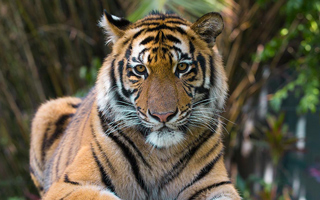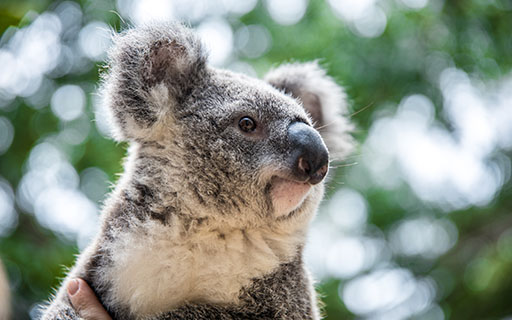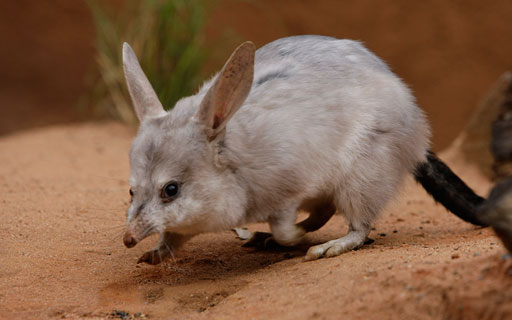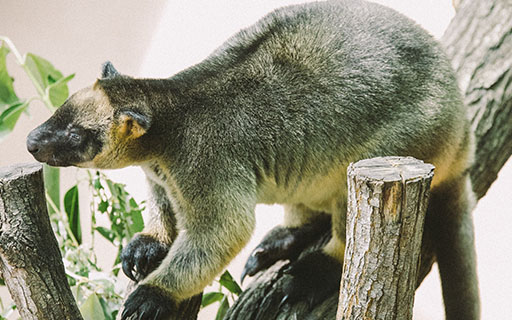TREE KANGAROOS
Dendrolagus lumholtzi
| Size: |
|
|||||||||||||||
| Weight: |
|
|||||||||||||||
| Status: | Least Concern on the IUCN red list due to the population trends. However, it is listed as a "Rare" species under the Queensland Nature Conservation (Wildlife) Act 1994. Long term viability will depend upon current and future impacts of loss of habitat, habitat connectivity, as well as mortality from vehicles, dogs, or disease. | |||||||||||||||
| Description: | Face, head, back of ears, shoulders and upper back are blackish-brown in colour with a lighter colour fur on lower back. They often have a "sweat band" of lighter yellow-grey across the forehead, down the cheeks and under the throat. Lumholtz Tree Kangaroos are well suited to arboreal life, sharing some characteristics of their larger cousins. Their large muscular forearms are much larger than their hind legs, all of which terminate in large 3-4 cm long curved claws similar to those found on koalas. |
|||||||||||||||
| Habitat: | Found in the rainforests of the Wet Tropics bioregion of North Queensland, they can be found from the Daintree River south to the Herbert River Gorge, with the species' highest densities occurring in complex rainforest of the Atherton Tablelands. | |||||||||||||||
| Life Cycle: |
The gestation of the Lumhotlz Tree Kangaroo is approximately 44 days. Usually only a single joey is born and attaches to one of 4 teats. The joey remains in the pouch between 246-275 days with weaning taking place anytime between 12-18 months. Females become sexually mature as young as 2 years and males as young as 4. Unlike some other species of macropod, embryonic diapause has not been observed in this species and there is no defined breeding season. In captivity they have been recorded living into their late teens. |
|||||||||||||||
| Diet: | They're primarily a folivore specialising in a wide range of native rainforest plant species. They will occasionally consume fruits and flowers, as well as the leaves of some invasive weed species. In captivity they also receive a "zoo diet" supplement consisting of chickpeas, white and orange sweet potato, and various other vegetables. | |||||||||||||||
| Facts: | They are able to move their hind legs independently of each other unlike normal kangaroos. This allows them to move throughout the canopy with ease while walking on thin branches. The tail is not prehensile but rather used simply as a counter balance, with broad, deep textured pads allowing for enhanced grip. Lumholtz Tree Kangaroos are generally solitary animals in the wild with males becoming aggressive towards one another upon entering one another's territory. They are sedentary species with a small home range, even remaining within their territory after major disturbances such as tree felling, rather than retreating to nearby intact forest. Dendrolagus means "tree hare". Some observations have recorded individuals leaping from tree to ground up to 20 m without sustaining injury. |
|||||||||||||||
DWF SPECIES




